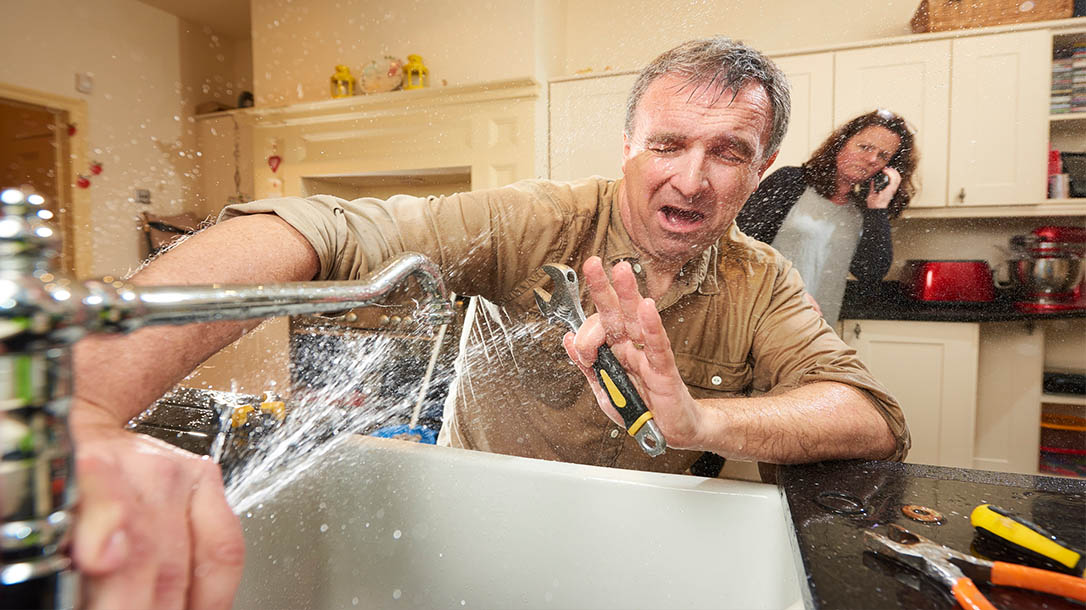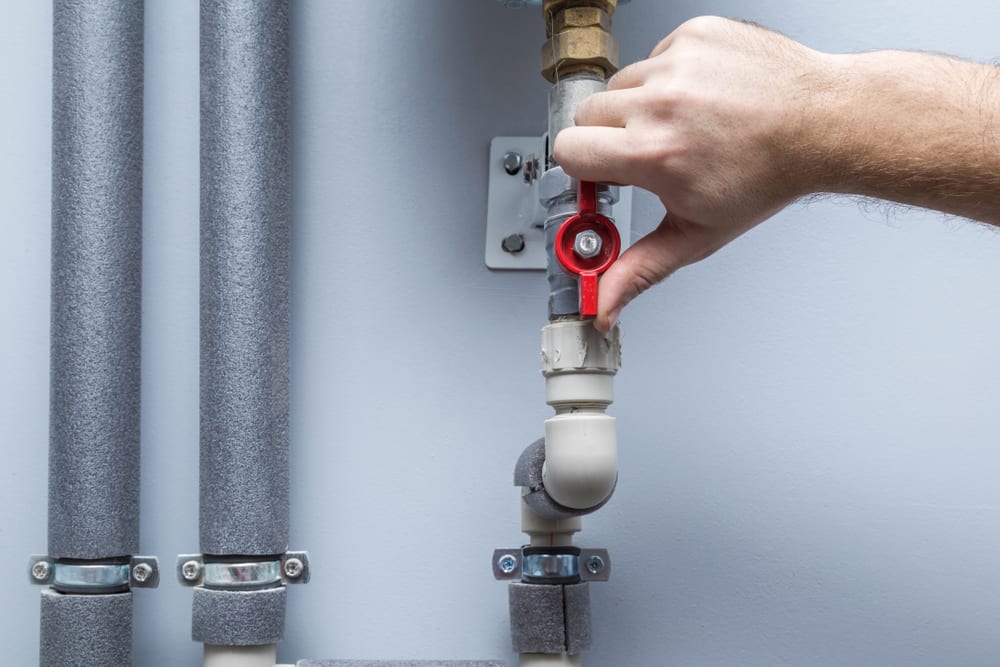Exploring the Value of Resolving a Faulty Faucet
Exploring the Value of Resolving a Faulty Faucet
Blog Article
Have you been interested in guidance about What Causes Leaky Faucets & How To Fix Them?

Trickling faucets could look like a small inconvenience, yet their influence goes beyond just the inconvenience of the noise. From wasting water to sustaining unnecessary economic prices and wellness threats, disregarding a trickling faucet can bring about numerous repercussions. In this short article, we'll explore why it's important to resolve this typical house problem immediately and effectively.
Wastage of Water
Environmental Effect
Dripping faucets contribute significantly to water waste. According to the Environmental Protection Agency (EPA), a solitary faucet leaking at one drip per second can squander greater than 3,000 gallons of water each year. This not only pressures water sources but likewise affects ecosystems and wildlife dependent on them.
Financial Costs
Enhanced Water Bills
Past the environmental influence, leaking taps can blow up water expenses significantly. The collected waste over time equates into greater utility expenditures, which could have been prevented with timely fixings.
Potential Home Damages
Moreover, long term dripping can bring about harm to components and surface areas bordering the tap. Water buildup can cause discoloration, rust, and also architectural issues if left unattended, leading to additional repair prices.
Wellness Concerns
Mold And Mildew and Mildew Growth
The constant presence of moisture from a dripping tap produces a suitable environment for mold and mildew development. These fungis not just endanger interior air top quality but additionally pose health dangers, especially for individuals with breathing problems or allergic reactions.
Waterborne Illness
Stationary water in leaking faucets can end up being a breeding place for microorganisms and other microorganisms, increasing the risk of waterborne conditions. Impurities such as Legionella bacteria thrive in stationary water, potentially causing severe ailments when ingested or breathed in.
DIY vs. Professional Repair work
Pros and Cons of Do It Yourself Repair Work
While some may try to deal with a leaking tap themselves, DIY repair work come with their very own set of obstacles. Without appropriate understanding and tools, DIY efforts can worsen the issue or lead to incomplete repair services, extending the issue.
Advantages of Working With a Specialist Plumber
Hiring a specialist plumber ensures that the underlying reason for the trickling faucet is addressed effectively. Plumbing technicians have the know-how and equipment to diagnose and repair faucet problems successfully, conserving time and minimizing the danger of additional damage.
Step-by-Step Guide to Fixing a Dripping Faucet
Tools Called for
Prior to trying to repair a leaking faucet, gather the essential tools, consisting of an adjustable wrench, screwdrivers, replacement parts (such as washing machines or cartridges), and plumber's tape.
Common Tap Issues and Their Solutions
Recognize the type of faucet and the particular concern causing the drip. Typical issues consist of damaged washers, corroded valve seats, or defective O-rings. Describe maker instructions or on-line tutorials for step-by-step support on repair work.
Safety nets
Regular Maintenance Tips
To stop dripping faucets, do regular upkeep such as cleaning aerators, examining for leakages, and changing worn-out components immediately. In addition, think about mounting water-saving devices or upgrading to a lot more reliable components.
Importance of Prompt Services
Addressing dripping taps as soon as they're discovered stops more water waste and possible damages, inevitably conserving both water and money in the long run.
Effect On Home Worth
Assumption of Well-Maintained Residential Or Commercial Property
Maintaining a property in good condition, including dealing with upkeep problems like dripping taps, enhances its viewed worth and worth amongst possible purchasers or tenants.
Influence on Resale Worth
Properties with well-maintained plumbing components, including taps, command higher resale values in the real estate market. Attending to leaking taps can contribute to a favorable impression throughout residential property inspections and arrangements.
Environmental Duty
Individual Payment to Conservation
Taking obligation for fixing dripping taps straightens with more comprehensive initiatives toward water conservation and ecological sustainability. Every person's activities collectively make a significant impact on maintaining valuable resources.
Lasting Living Practices
By prioritizing prompt repair work and adopting water-saving routines, individuals contribute to lasting living techniques that benefit both existing and future generations.
Conclusion
Dealing with a leaking faucet surpasses plain benefit; it's an important step toward conserving water, reducing monetary prices, and protecting health and wellness and building. Whether with do it yourself repair services or professional assistance, acting to repair dripping taps is a tiny yet impactful means to advertise accountable stewardship of resources and contribute to a much healthier, extra sustainable future.
How to Fix a Leaky Faucet: Step-by-Step Repair Guide
A leaky faucet may seem like a simple annoyance, but if it's not fixed promptly, that leak could cost hundreds to potentially thousands. From water damage to mold, mildew, and high water bills, even a tiny leak can be catastrophic if left unattended. Damage like this can even affect the overall value of your home, so it's important to take the right approach for leaky faucet repair. You may need the help of a plumber in some cases, but we've got a few tips you can try on how to fix a leaky faucet before calling the pros.
Four Faucet Types
When you're learning how to fix a leaky faucet, the first step is knowing what kind of faucet you're working with! There are four common types.
Cartridge Faucets
Cartridge faucets come in one- or two-handled varieties. In one-handled cartridge faucets, hot and cold water combines in a single cartridge. In the two-handled versions, hot and cold water are controlled separately and mixed in the faucet.
Ball Faucets
Ball faucets have a single lever you push up and down to adjust the pressure and rotate to change the temperature. A slotted metal ball controls the amount of water allowed into the spout.
Compression Washer Faucets
They're the oldest type of faucet, but they're still used in many homes — especially older ones. Compression faucets have two separate handles that, when turned, raise or lower the washer that seals a water valve. This valve stops water from flowing through the faucet when it is turned off.
Disc Faucets
Disc faucets rarely need to be repaired due to their maintenance-free design. The water flow is controlled by two discs — the upper one raises and lowers against a fixed lower disc, creating a watertight seal. If your disc faucet starts leaking, you may need to replace the seals or clean residue buildup from the inlets.
Fixing a Leaky Faucet
Step 1: Turn Off the Water
Whether you're learning how to fix a leaky bathtub faucet or how to fix a leaky kitchen faucet, always turn off the water supply to your working area when you're fixing a leak. The last thing you want is a flood added to your list of things to fix.
Look for the shutoff valves below your sink or around the tub and turn them clockwise to stop the water flow. If your faucet doesn't have shutoff valves, you may need to turn off the water for the whole house. Check to make sure it's off by turning the faucet on. If nothing comes out, you're ready to start the repair.
Step 2: Take Apart the Faucet
How you disassemble your faucet depends on the type of fixture you have. You can use a flathead screwdriver to remove the caps on top of the handle or handles for cartridge and compression faucets. Inside, you should see handle screws. Unscrew these with a screwdriver to remove the handle.
Disc- and ball-style faucets will typically have an inlet screw near the handle, and removing that will reveal the interior of the faucet.
Detach the Valve Stem
For cartridge- and compression-style faucets, you'll see the inner valve stem or cartridge once you remove the faucet handles. If you have a compression faucet, unscrew the brass valve stem. If you have a cartridge faucet, pull out the cartridge. If your cartridge has been in place for a while, it may require some tools or extra force to remove it due to mineral deposits.
Examine and Replace Parts
Once you've removed the parts, check them out to confirm what needs to be replaced. You may see corroded rubber washers, O-rings, stems, or cartridges. On a ball-style faucet, check the seats and springs for damage.
If you need to repair a leaky disc faucet, check the inlet and seals on the lower disc.
Once you determine what parts must be replaced, visit your local hardware store. Bring the damaged parts with you to ensure you can purchase the correct components to replace them.
Clean Valves and Faucet Cavity
If you've removed a stem or cartridge, you may notice mineral buildup in the faucet's threads. Use white vinegar to clean the valve seat by soaking it for a few minutes, then scrub it away with a soft toothbrush and rinse with warm water. You can also clean the interior of the faucet in the same way.
Reassemble the Faucet
Once your faucet is cleaned and the required parts have been replaced, it's time to reassemble it. Put the pieces back together and slowly turn the water supply back on. Doing this slowly is crucial because too much initial water pressure can damage the new hardware you've just installed.
https://homewarranty.firstam.com/blog/how-to-fix-leaky-faucet

As a keen person who reads on Why Are My Faucets Dripping (And Can I Fix It Myself)?, I was thinking sharing that excerpt was important. Be sure to pause to share this article if you liked it. Thanks a bunch for being here. Don't forget to check our blog back soon.
Report this page